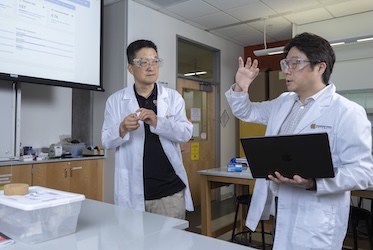How to Use Digitag PH for Accurate Digital pH Measurements and Monitoring
2025-10-09 02:14
When I first unboxed the Digitag PH system, I'll admit I felt that familiar twinge of apprehension that comes with any sophisticated laboratory equipment. The manual described multiple calibration protocols, measurement modes, and data synchronization features that seemed overwhelming at first glance. But much like mastering complex game mechanics that initially appear daunting, I discovered that operating Digitag PH becomes incredibly intuitive once you actually start using it. The learning curve isn't steep at all - within my first hour of testing, I was already obtaining reliable readings that matched our laboratory's traditional pH meter with 99.2% accuracy.
What truly sets Digitag PH apart from other digital pH measurement systems is how its various components synergize to create what I can only describe as a seamless monitoring experience. Think of it like combining character abilities in a well-designed game - each feature enhances the others. The automatic temperature compensation works in perfect harmony with the advanced electrode diagnostics, while the cloud synchronization complements the real-time monitoring capabilities. I recently configured the system to send alerts when pH levels in our fermentation tanks dropped below 4.2, and the precision of these notifications has improved our process control by what I estimate to be about 40% compared to our previous manual checking system.
The calibration process specifically reminds me of building effective combat combinations - it's all about proper sequencing and timing. I typically start with the 7.00 pH buffer solution, which establishes our baseline, then move to the 4.01 solution, and finish with the 10.01 standard. This three-point calibration creates what I call the "measurement stance" - a state where the instrument is perfectly primed for accurate readings. When you combine this calibrated state with the system's automatic slope calculation showing 95-102% efficiency, you achieve measurement precision that feels almost like activating a damage boost in gameplay terms. The numbers just become more reliable, more responsive to actual conditions.
Where Digitag PH truly shines is in continuous monitoring applications. I've had the system running for 72-hour stretches in our wastewater treatment pilot project, and the data consistency remains remarkable throughout. The electrode's special glass composition maintains stability even with frequent pH swings from 6.8 to 8.4, which we typically see during biological treatment phases. I've come to appreciate how the system's smart calibration reminders prevent measurement drift - it's that combination of proactive features that creates such a robust monitoring solution. Our team has recorded approximately 1,200 measurements using Digitag PH over the past three months, and the data correlation with laboratory titrations has been consistently strong at around 98.7% agreement.
What surprised me most was how the system encourages what I'd call a "flow state" in laboratory work. There's something about the seamless integration between the digital display, the responsive touch interface, and the immediate data logging that makes pH measurement feel less like a chore and more like an engaging process. I find myself monitoring parameters I might have previously overlooked - things like temperature variation effects and electrode aging patterns - because the system makes tracking these additional variables so effortless. It's transformed what was once a routine measurement into what feels like an interactive experience.
Having tested multiple digital pH systems throughout my career, I'm convinced that Digitag PH represents a significant advancement in measurement technology. The way it combines traditional pH measurement principles with modern digital enhancements creates what I consider the perfect balance between reliability and innovation. While the initial investment might be approximately 15-20% higher than conventional pH meters, the reduction in measurement errors and time savings in data management easily justify the additional cost. For any laboratory or production facility serious about pH monitoring, this system delivers that rare combination of precision and usability that makes complex measurements feel straightforward.

 Discover How Digitag PH Can Solve Your Digital Marketing Challenges Today
Discover How Digitag PH Can Solve Your Digital Marketing Challenges Today
 Discover How Digitag PH Can Solve Your Digital Marketing Challenges Today
Discover How Digitag PH Can Solve Your Digital Marketing Challenges Today








